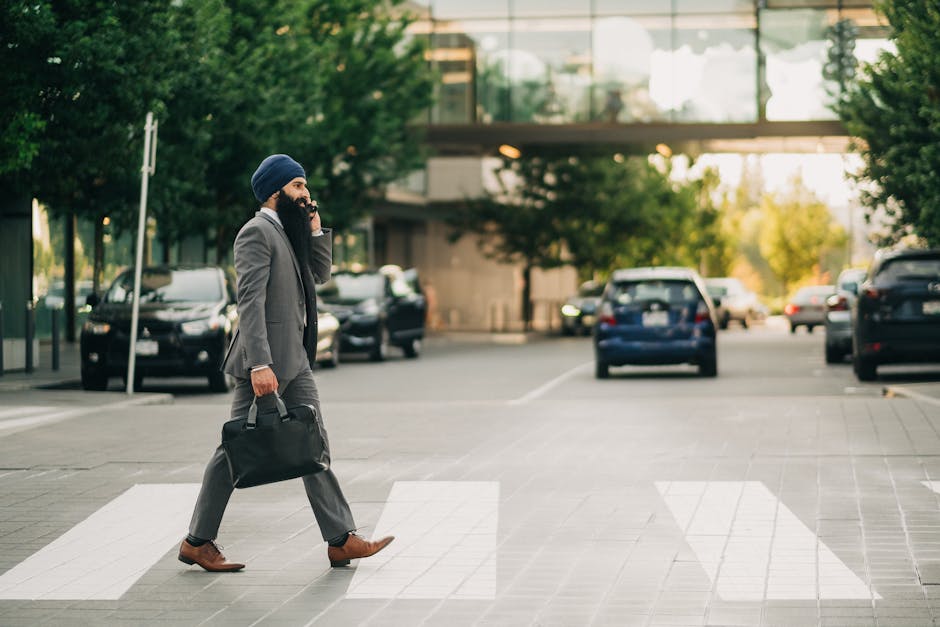Navigating High Foot Traffic: Strategies for Efficient Workplace Management
“As workplaces experience a surge in foot traffic post-pandemic, this article explores key strategies for efficient management. From hybrid work models to space optimization, learn how to create a productive and satisfying environment for employees returning to the office. ”

Navigating High Foot Traffic: Strategies for Efficient Workplace Management
In the wake of the global pandemic, workplaces are experiencing a significant resurgence in foot traffic. As employees return to the office, companies face new challenges in managing their spaces effectively. This article explores strategies for navigating high foot traffic in the workplace, ensuring productivity and employee satisfaction in this new era of work.

The Return to Office Phenomenon
The UK has seen a remarkable 57% increase in workplace foot traffic from 2021 to 2022, outpacing global trends. This surge reflects a growing desire for in-person collaboration and the benefits of onsite work. However, it also presents challenges for workplace managers who must balance the influx of employees with space management and safety concerns.
Key Factors Driving High Foot Traffic
- Hybrid Work Models: Many companies have adopted hybrid work schedules, leading to fluctuating office occupancy throughout the week.
- Collaborative Spaces: The demand for in-person meetings and teamwork has increased, resulting in more movement within offices.
- Employee Preferences: Despite initial resistance, many workers now appreciate the benefits of face-to-face interactions and office amenities.
Strategies for Managing High Foot Traffic
1. Implement Flexible Seating Arrangements
To accommodate varying numbers of employees on different days, consider adopting a hot-desking or office hoteling system. This approach allows for efficient space utilization and can help manage the flow of people throughout the workplace.
2. Optimize Office Layout
Redesign your office layout to create natural flow patterns and reduce congestion in high-traffic areas. Consider:
- Widening main walkways
- Creating multiple paths to popular destinations (e.g., meeting rooms, kitchens)
- Strategically placing collaborative spaces to distribute foot traffic

3. Leverage Technology for Space Management
Utilize workplace management software to:
- Track occupancy levels in real-time
- Allow employees to book desks or meeting rooms in advance
- Analyze foot traffic patterns to inform future space planning decisions
4. Stagger Work Hours
Encourage departments or teams to adopt slightly different work hours to reduce peak-time congestion. This can help distribute foot traffic more evenly throughout the day.
5. Enhance Wayfinding
Clear signage and digital displays can help employees navigate the office more efficiently, reducing unnecessary movement and potential bottlenecks.
The Impact of High Foot Traffic on Workplace Culture
The increase in office occupancy has significant implications for workplace culture:
- Enhanced Collaboration: More face-to-face interactions can lead to improved teamwork and innovation.
- Strengthened Company Culture: Regular in-person contact helps reinforce company values and build stronger relationships among colleagues.
- Increased Productivity: While individual tasks might be accomplished remotely, complex problem-solving and creative processes often benefit from in-person collaboration.

Challenges and Solutions
Challenge 1: Noise Levels
With more people in the office, noise levels can become a concern, potentially affecting concentration and productivity.
Solution: Implement sound-masking technology and create designated quiet zones for focused work.
Challenge 2: Meeting Room Scarcity
High foot traffic often correlates with increased demand for meeting spaces.
Solution: Introduce a mix of formal and informal meeting areas, including standing meeting spots and small breakout rooms, to accommodate various group sizes and meeting types.
Challenge 3: Maintaining Health and Safety
Even as pandemic concerns wane, health and safety remain priorities in high-traffic environments.
Solution: Continue to prioritize employee health screenings and maintain enhanced cleaning protocols, especially in high-touch areas.
The Future of Workplace Foot Traffic
As we look ahead, it's clear that managing workplace experience will be crucial for companies navigating the post-pandemic era. The trend towards higher office occupancy is likely to continue, driven by the recognized benefits of in-person collaboration and the evolving preferences of employees.
To stay ahead of the curve, companies should:
- Regularly assess and adapt their workplace strategies
- Invest in flexible office solutions that can accommodate changing needs
- Prioritize employee feedback to ensure the workplace meets their evolving expectations
By embracing these strategies and remaining adaptable, organizations can turn the challenges of high foot traffic into opportunities for enhanced productivity, innovation, and employee satisfaction.
In conclusion, as workplaces continue to evolve, managing high foot traffic will be a key factor in creating successful, dynamic office environments. By implementing thoughtful strategies and leveraging technology, companies can create spaces that not only accommodate increased occupancy but thrive on the energy and collaboration it brings.